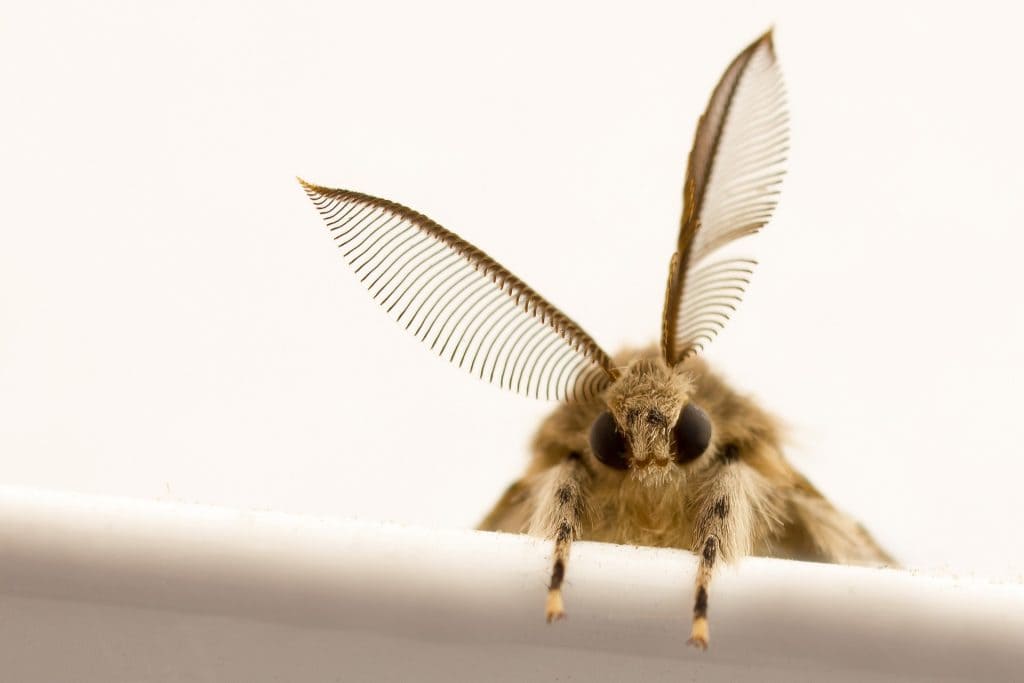The Fear Of Moths
Do you suffer from a fear of moths (lepidopterophobia/mottephobia)? Does the mere sight of a moth send shivers down your spine? If so, it’s time to turn the light out on your fear of moths and take back control. In this article we explore the fascinating world of moths, debunk common myths, and provide tips on how to overcome your fear of moths, through proven therapy techniques and practical home advice. You will have a better appreciation about how moths interact with and provide support for our environment. Additionally, we will give you information on how to access our life changing moth phobia therapy. It is fully possible to get over your fear of moths in just one day!
Understanding The Fear Of Moths
If you have a fear of moths, you’re not alone. It’s a common phobia affecting many people. It may seem irrational to some but for those suffering from this fear, the experience can be intense. Just the sight of a moth can cause high anxiety and panic. Understanding the root cause of this fear is the first step towards overcoming it and Creature Courage is here to help guide you through the process.
Having a specific phobia of moths (mottephobia) can stem from a few different factors. For many it can be a learned behaviour from a parent, for others, perhaps it’s a scary childhood encounter; frightened by a moth flapping around their head. Yet, for many, it’s part of a general fear, which usually including butterflies (lepidopterophobia) and other insects (entomophobia).
For many people, it is the unpredictable flapping motions of moths wings that they find most triggering. The anxious thought of the moth suddenly flying towards them triggering their fear. Thus, the root cause of the fear is, actually, hidden within the deeper fear of being out of control.
Furthermore, moths are really harmless creatures and very much misunderstood, which is exactly why we are here.
How Moths Are Helping Humans And The Planet
Moths play an important role in our ecosystem as pollinators. They are responsible for the pollination of various plants and flowers, aiding in their reproduction and survival. In fact, they pollinate plants at a faster rate than bees and other, so called, day insects! What this means is that we would not be able to grow and enjoy many of the plants that we do without moth’s help. Without them, our eating habits and how we even survive on the planet could could be drastically altered.
As much as they help us to survive, moths are, unfortunately for them, an essential food source for other animals – including birds and bats. Without moths, our natural world would be significantly impacted. In fact, entire species could go extinct without the existence of moths. Moths have been found to be very good indicators of a healthy ecosystem, as they are particularly sensitive to environmental changes and disturbances.
So, moths are an integral part of our natural world and have an important role to play. Understanding that interaction with the world around us can help alleviate some of the fear and anxiety associated with moths.
Next we look at a few common myths about moths, in the hope that by debunking these myths you can begin to challenge your fear and embrace a new perspective.
Common Misconceptions and Myths about Moths
Myth 1: All Moths eat clothes
Contrary to popular belief, moths are not dangerous and most do not set out to eat holes through your favourite clothing. Indeed, this is one of the most common misconceptions and a major contributor to how they are seen. While it is true that a few species of moth can cause damage to fabrics, most moth species are harmless to both you and your clothing.
All-in-all, moths are far more interested in nectar, pollen, or other natural food sources. By following the tips below you can be sure you’re doing everything possible to minimise any risk moths might pose to your clothes:
- Store your clothes in airtight containers or garment bags
- Regularly clean your closets and drawers
- Keep good ventilation to reduce the risk of infestation
- Use lavender sachets or cedar blocks as they are known to repel moths and they can be easily hanged inside wardrobes or placed in drawers.
These simple steps will minimise the chances of encountering moths eating your clothes.
Myth 2: Moths Are Dirty Or Carry Diseases
Another common misunderstanding is that moths are dirty, disease carrying insects. Nothing could be further from the truth. Moths, much like butterflies, are generally clean insects with excellent hygiene. They groom themselves regularly to keep their wings and bodies clean.
Myth 3: Moths Will Fly At You
Moths are attracted to light sources at night because they navigate using the moon and stars. Outside lights interfere with this, hence why we find them dancing around our outdoor lights. It can often feel like we are being targeted by moths at night. However, it’s actually how we use lights and where we position them that causes moths to become confused. Though attracted to light, moths have no interest in getting close to bigger animals such as humans – their instincts are to avoid us!
The Biology And Behaviour Of Moths
To help overcome your fear of moths, it is often helpful to learn about their biology and behaviour. Moths belong to the order Lepidoptera, which also includes butterflies. They have a fascinating life-cycle consisting of four stages: egg, larva (caterpillar), pupa (cocoon), and adult.
Many moths only live a few weeks once emerging from their cocoons. Some don’t even live for a week! These types of moths do not even have mouths to eat, as their lives end so soon. So, we can try and feel some compassion and appreciate their short lives – to let them enjoy it while they can!
Unlike some other insects, moths do not bite or sting and pose no real risk. They simply want to dance in the moonlight and find some romance before their lives come to an end. By understanding what drives their behaviour, we can appreciate moths in a less fear-inducing light.
Prove Methods For Overcoming The Fear Of Moths
Getting over the fear of moths can be accomplished in a short time with the right therapeutic techniques. Some of the proven methods to get over a moth phobia are:
- Education to build compassion and fascination: The more you feel fascinated by something the less you fear it. Fear and fascination are connected to the same part of the brain, so these feelings are easily flipped. Education also helps us build compassion – we fear less when we focus on another creature’s fear instead of our own.
- Cognitive-behavioural therapy (CBT) is a commonly used approach that helps you identify and challenge irrational thoughts and beliefs surrounding your fears. Through CBT, you learn to reframe your thoughts, develop coping strategies, and gradually expose yourself to situations that trigger your fear. Using this therapy can help you gain a greater sense of control and reduce the intensity of your fear over time.
- Exposure or immersion therapy involves gradual exposure to the feared object or situation, in a safe environment. This can be done independently but, for best results, it is advisable to use a trained therapist. For individuals with a fear of moths, exposure therapy may involve gradually introducing moths, first through pictures, then videos, and eventually a live encounter. By gradually increasing exposure, individuals can desensitise themselves to the fear response and develop a sense of lasting control.
- Relaxation exercises, such as deep breathing, meditation or progressive muscle relaxation, can also be helpful in managing anxiety during exposure. Deep breathing gets you out of fight or flight and into a rest and digest state. This therefore, reduces physiological symptoms associated with fear and panic.
Frequently Asked Questions
- What’s the difference between a moth and a butterfly? They are both part of the lepidoptera group and are very similar creatures, however, what has helped create a fear of moths is that they are largely nocturnal, whereas butterflies are usually only seen during the day.
- Do caterpillars turn into moths as well as butterflies? Yes, in fact most caterpillars will turn into moths! This is because there are 2,500 different types of moth and only 60 types of butterflies.
- Why do we have to save moths? The National Moth Recording Scheme, launched by Sir David Attenborough, is run by Butterfly Conservation and has found moth numbers to be declining rapidly, with many species already extinct. As we have discussed, moths are a crucial part of our ecosystem and it’s vital they continue to thrive.
If you are afraid, there are a few things you can do, now, to help share the outdoors with moths in a more pleasant way:
- We all know that moths are attracted to light, therefore, fix outdoor lights away from entrances to your home.
- Place these lights away from doors and windows to minimise the chances of moths gathering where you need access.
- The use of coloured light bulbs, such as yellow and red, can reduce the number of moths likely to gather.
But remember, the best thing you can do to get over the fear is to appreciate how you can co-exist with moths and not avoid them. Take time to watch them and get closer to them. The more you get used to their movements and behaviours, the less afraid you will be.
Conclusion: Embracing a New Perspective on Moths
Don’t let a fear of moths control your life any longer. By understanding the fascinating world of moths, realising the misconception of them, and making use of proven techniques to overcome your fear, you can take a giant step towards conquering your moth phobia.
Moths are beautiful creatures that play an essential role in our ecosystem, and by focusing on that, you can develop a new found appreciation for them. So, turn the light out on your fear of moths and step into a world where these much maligned insects are no longer a source of stress.

